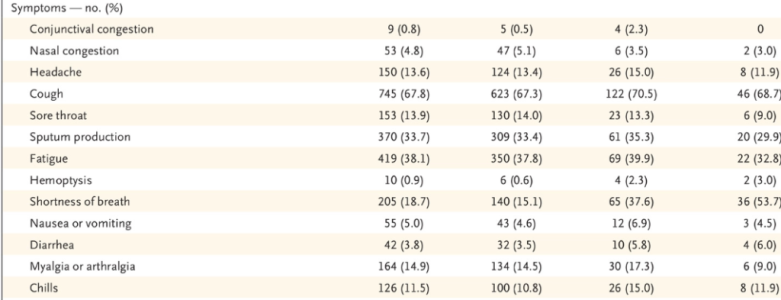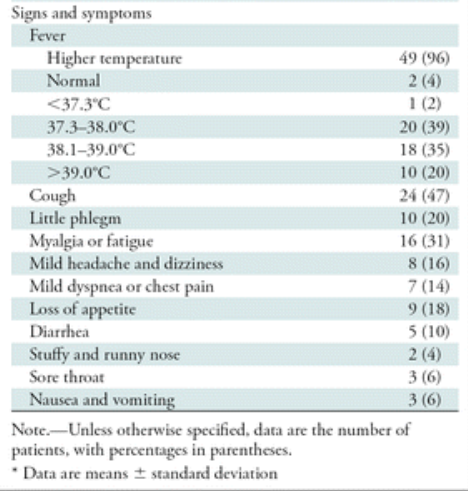
Getty Yes, headache can be an early symptom of COVID-19.
It can be a frightening experience to feel like you’re coming down with something in the middle of a pandemic and to wonder whether it could be COVID-19. That’s especially true of common symptoms like a headache, which can also be triggered by other causes – even the stress of the pandemic itself. Is headache a symptom of coronavirus?
The answer is that, yes, a headache has been reported in research studies as a symptom of coronavirus in some patients. The Centers for Disease Control and Prevention now includes headache on its symptom list for the virus. However, it’s not the most common symptom, and many different things can cause headaches in people. The best suggestion is to check with your doctor. Click2 Houston pointed out that stress over the coronavirus pandemic is also triggering migraines in some people, even if they don’t have the actual virus itself.
Symptoms can vary by person, but people who’ve had COVID-19 often describe feeling like a mild cold is coming on before being socked with a fever, dry cough and shortness of breath. However, others are asymptomatic or experience other symptoms, such as diarrhea, fatigue, a sore throat, a headache, a runny nose and, yes, a headache.
In fact, the Centers for Disease Control and Prevention has now expanded its symptom list to include a headache. Previously, the CDC listed only shortness of breath, a fever and a dry cough as the key symptoms of coronavirus. Now the CDC says the following symptoms may appear 2-14 days after exposure:
- Fever
- Cough
- Shortness of breath or difficulty breathing
- Chills
- Repeated shaking with chills
- Muscle pain
- Headache
- Sore throat
- New loss of taste or smell
According to NBC News, coronavirus often starts out slowly, and experts say that, “very often,” the earliest symptoms are “minor physical complaints — slight cough, headache, low-grade fever,” that gradually get worse.
Red-rimmed eyes have also emerged as a possible symptom of COVID-19.
“The most common symptoms of COVID-19, the disease caused by the new coronavirus, are fever, cough and shortness of breath,” according to John Hopkins Medicine. “Some patients also have body aches, runny nose, sore throat or diarrhea. If you have a sore throat and think you have been exposed to the new coronavirus, contact a health care provider by phone and discuss your risk.”
What do research studies say about the prevalence of headaches in COVID-19 patients?
Here’s what you need to know:
Headaches Have Been Noted in Some COVID-19 Patients But Not the Majority of Them
The study Clinical Characteristics of Coronavirus Disease 2019 in China, which appeared in the New England Journal of Medicine, did find that headache was a symptom in some COVID-19 patients. In that study, headache was reported in 13.6% of patients. It was found in 13.4% of non-severe patients and in 15% of severe patients, according to that study. Here’s the chart:

Clinical Characteristics of Coronavirus Disease 2019 in China
“During the initial phase of the Covid-19 outbreak, the diagnosis of the disease was complicated by the diversity in symptoms and imaging findings and in the severity of disease at the time of presentation,” that study noted. It added that headache was not the most common symptom found, however:
The most common symptoms were fever (43.8% on admission and 88.7% during hospitalization) and cough (67.8%). Diarrhea was uncommon (3.8%).
Emerging 2019 Novel Coronavirus (2019-nCoV) Pneumonia is another research study that broke down the percentages of symptoms in Chinese patients with the virus. That study found mild headache or dizziness in 16% of patients.
That study also found that 10% had diarrhea and 6% had nausea or vomiting. The most common symptom was fever, which was reported by 96% of patients, followed by a cough (47%), a little phlegm (20%), myalgia (muscle aches) or fatigue (31%), mild headache and dizziness (16%), loss of appetite (18%) and stuffy or runny nose (4%).
Here’s the chart from that study:

Emerging 2019 Novel Coronavirus (2019-nCoV) Pneumonia
According to Harvard Medical School, “some people infected with the virus have no symptoms. When the virus does cause symptoms, common ones include low-grade fever, body aches, coughing, nasal congestion, and sore throat. However, COVID-19 can occasionally cause more severe symptoms like high fever, severe cough, and shortness of breath, which often indicates pneumonia.”
COVID-19 symptoms run the gamut. Digestive symptoms have also emerged in some patients.
A study from the Wuhan Medical Treatment Expert Group for COVID-19 appeared in The American Journal of Gastroenterology. It studied 204 people who received medical care for COVID-19. You can find the study here. The researchers found that digestive problems were far more common in coronavirus patients than other studies indicated, writing that “half of patients in our cohort reported a digestive symptom.” However, that statistic was inflated by including people reporting a loss of appetite.
They concluded: “Although most patients presented to the hospital with fever or respiratory symptoms, we found that 103 patients (50.5%) reported a digestive symptom, including lack of appetite (81 [78.6%] cases), diarrhea (35 [34%] cases), vomiting (4 [3.9%] cases), and abdominal pain (2 [1.9%] cases).”
What is the incubation period? “Because this coronavirus has just been discovered, the time from exposure to symptom onset (known as the incubation period) for most people has yet to be determined. Based on current information, symptoms could appear as soon as three days after exposure to as long as 13 days later. Recently published research found that on average, the incubation period is about five days,” says Harvard.
When should you go to the doctor? The CDC advises:
If you develop any of these emergency warning signs* for COVID-19 get medical attention immediately:
Trouble breathing
Persistent pain or pressure in the chest
New confusion or inability to arouse
Bluish lips or face
The CDC warns that this list is not all-inclusive. When in doubt, contact your doctor. “Older adults and people who have severe underlying medical conditions like heart or lung disease or diabetes seem to be at higher risk for developing more serious complications from COVID-19 illness,” CDC says.
READ NEXT: Can You Get Coronavirus From Money?